Winter has arrived! Some people will be happy and others will be a little less enthused. Same goes for our pets. Some pets love the snow and others would much rather live in Florida all year round. Since we live in Canada, there’s not a whole lot we can do about the snow, unless you are lucky enough to fly south during the winter. For those of us that have to stay behind, there are a number of snow-related issues that can affect our pets. These issues can affect all of our pets but this blog will mostly focus on our dogs and how we can help them through the winter.
Winter Blue: Road Salt
For pets that walk on the sidewalk during the winter, sometimes deicing products like salt can be unavoidable. Salt can cause the pads on your dog’s feet to become dry which can lead to cracking. Dry, cracked pads are very painful and can sometimes bleed. Long contact with road salt can also cause chemical burns on pads as well. After walking in snow and salt, it is common for your dog to lick their feet to try and clean and dry them. Ingesting road salt can be harmful to your pet and could mean a trip to the vet. How can you protect your dog from the hazards of road salt?
Solution: If your walking route is along sidewalks, try to walk your dog beside the sidewalk on the snow or grass instead of directly on the salty concrete. If your dog will tolerate them, there are lots of different boot options out there for pets. You can find simple boots that look like rubber balloons, or you can find some more hardcore boots for the intrepid trekkers. It may take a little training and some time for your dog to get used to wearing boots but hopefully, after some time, they won’t even notice them. My own dog, Cooper, has a neurological condition that causes him to drag his feet when he walks. Because of this he wears boots and has never bothered with them at all. He actually looks forward to wearing them because then he can go on long walks without his feet hurting. If boots are not an option for your dog, there are lots of different balms that you can use on your dog’s feet to keep them moisturized and protected. The OSPCA website also offers a DIY recipe for paw balm. It’s also a good idea to wipe your dog’s paws off with warm water and a cloth when you come inside after your walk to clean off any salt residue.
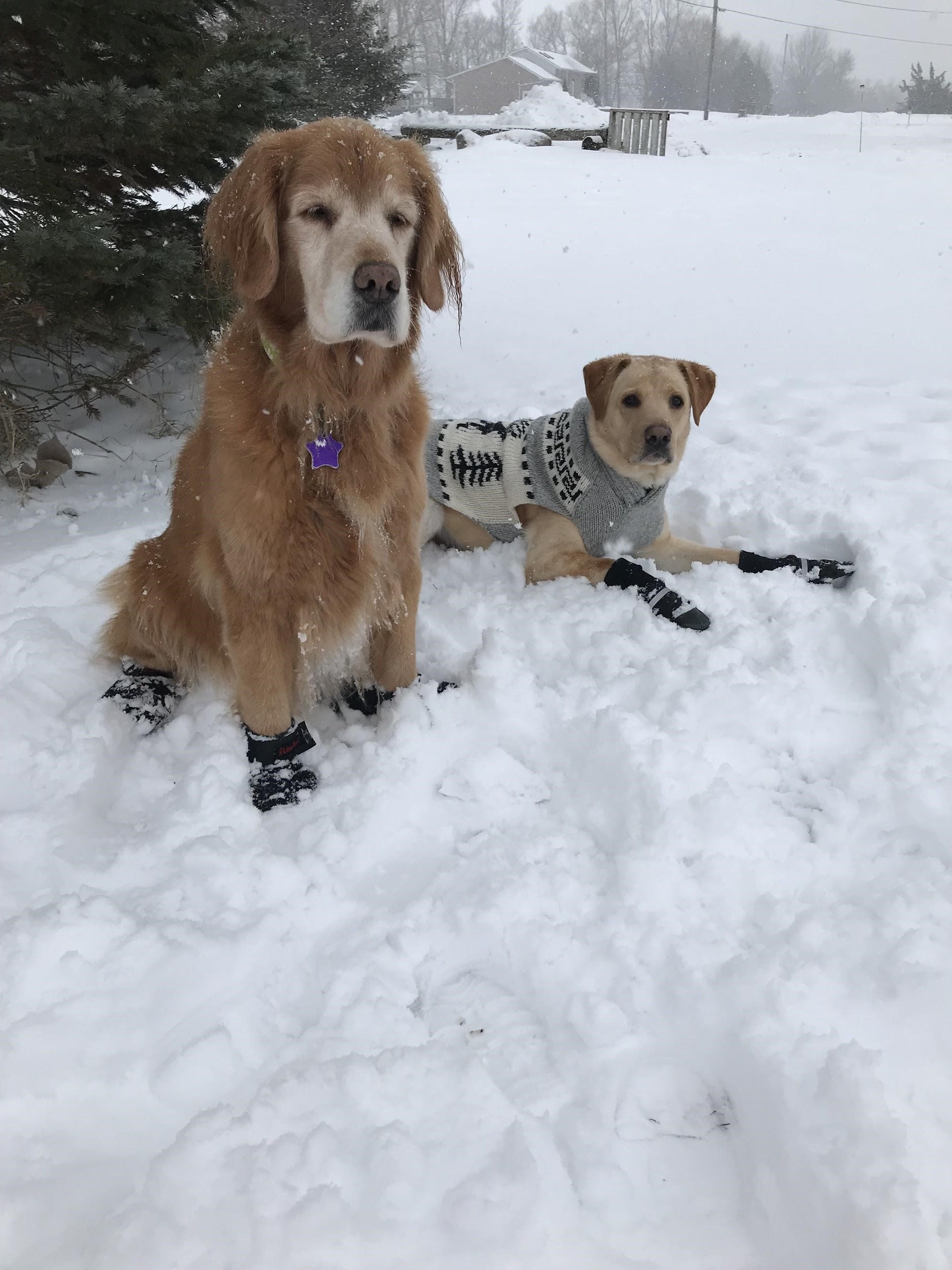
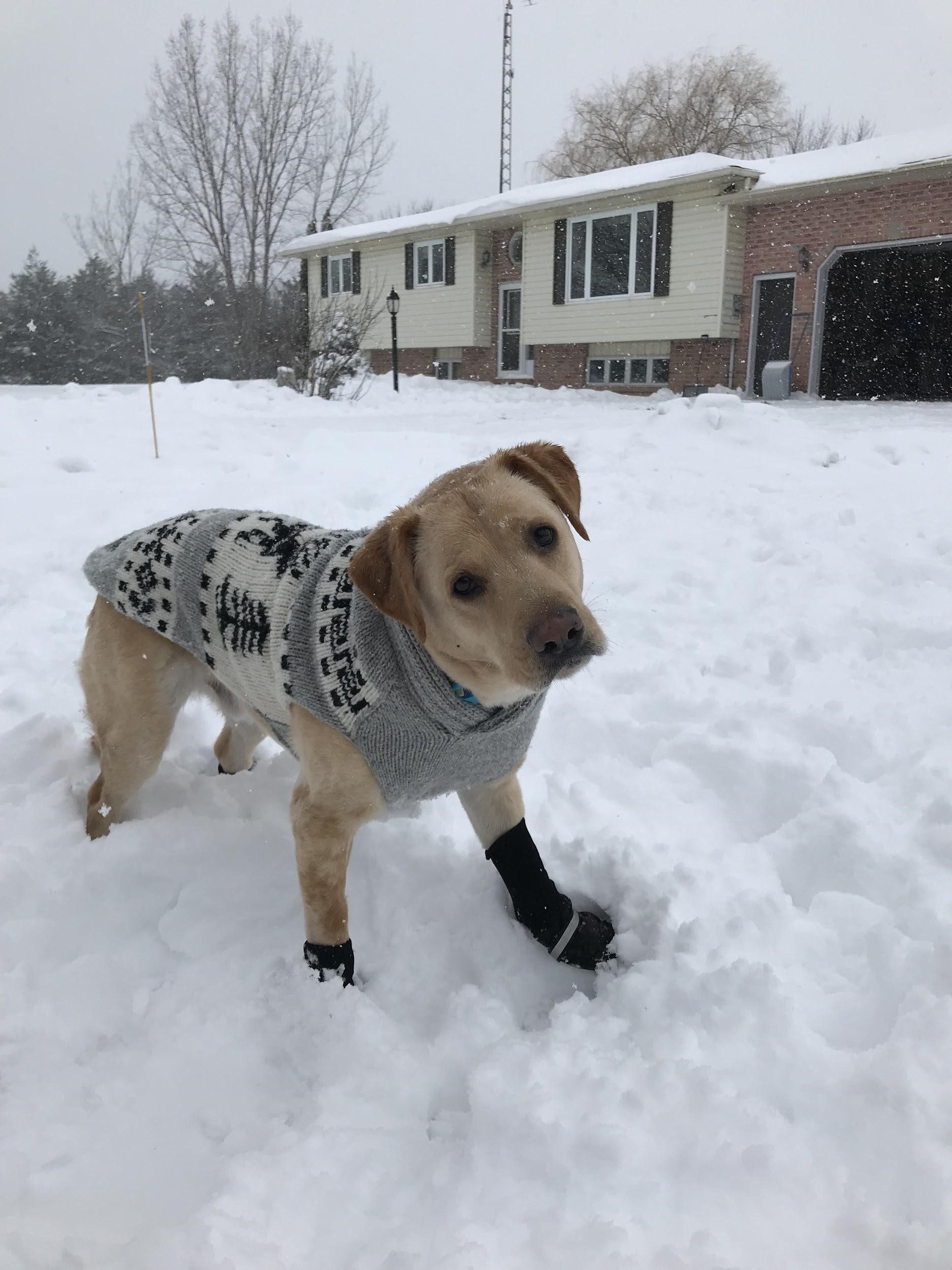
Winter Blue: Antifreeze
As many people likely know, antifreeze is a chemical product that is used commonly in cars to help reduce the freezing point of water-based liquids. Antifreeze can be a common product found in many garages. Antifreeze is made up of ethylene glycol which gives it a sweet taste however it is highly toxic to animals. If curious animal tongues get into antifreeze it could easily be fatal. One teaspoon of antifreeze is enough to kill a cat or 10 lb dog. Antifreeze, when ingested, will cause severe kidney damage or failure, damage to the nervous system and death within 48 hours if not treated by a veterinarian as soon as possible.
Solution: There are now pet-safe antifreeze products available for purchase. These products are made up of propylene glycol which is already found in medicine, makeup products and pet food. It’s a little more expensive than traditional antifreeze but if you have pets, it may be a good idea to look into. Any spills should be cleaned up immediately to prevent pets from licking up the antifreeze. Make sure to store the bottles in a safe place where dogs, cats and children are not able to get into any. If you suspect your pet may have gotten into antifreeze, always bring them to a veterinarian immediately. The faster that treatment is started, the better chance your pet has.
Winter Blue: Cold Cars
In the summer we know not to leave our dogs in the car because we know the extreme danger that it poses. The same applies to leaving dogs in the car in the winter. Temperatures can drop inside the car which could lead to hypothermia if your pet is left inside for too long. Hypothermia can be just as dangerous as hyperthermia.
Solution: Don’t risk it! Leave your pet at home where it is safe and warm. If your dog struggles with separation anxiety, talk with your veterinary team about tips and tricks on how to help overcome this. If you’re worried that your dog will be bored or get into trouble while you are away for extended periods of time throughout the day, look into doggie daycare. There are lots of facilities in our area that offer daycare for pets with busy owners.
Winter Blue: Arthritis and Aching Joints
Some of our older pets struggle with arthritis and sore joints. The colder temperatures can cause this pain to be worse and it can make regular activities harder for our dogs. Sore joints will make dogs less likely to want to go outside or up and down stairs. This may make accidents in the house more common since it’s easier to go inside instead of down the stairs to go outside.
Solution: If you are able to, building or installing a ramp instead of having your dog use the stairs may make things easier on them. Walking up and down a ramp is much more gentle on their joints as opposed to stairs. We built a ramp specifically for our senior dog who is too heavy to consistently carry down the stairs and now our other 3 dogs choose to use it instead of the stairs! Jackets and sweaters are also helpful in the colder weather. Putting a jacket on your pet a few minutes before they go outside will help to keep them warmer which will help their joints as well. You can also use warm compresses on your pets hips or other sore joints. Warm towels and gently warmed oat bags can work well, just make sure that the compress isn’t too hot. You can also talk with your veterinary team about different glucosamine supplements and prescription pain relief medications that might benefit your pet more in the long term.
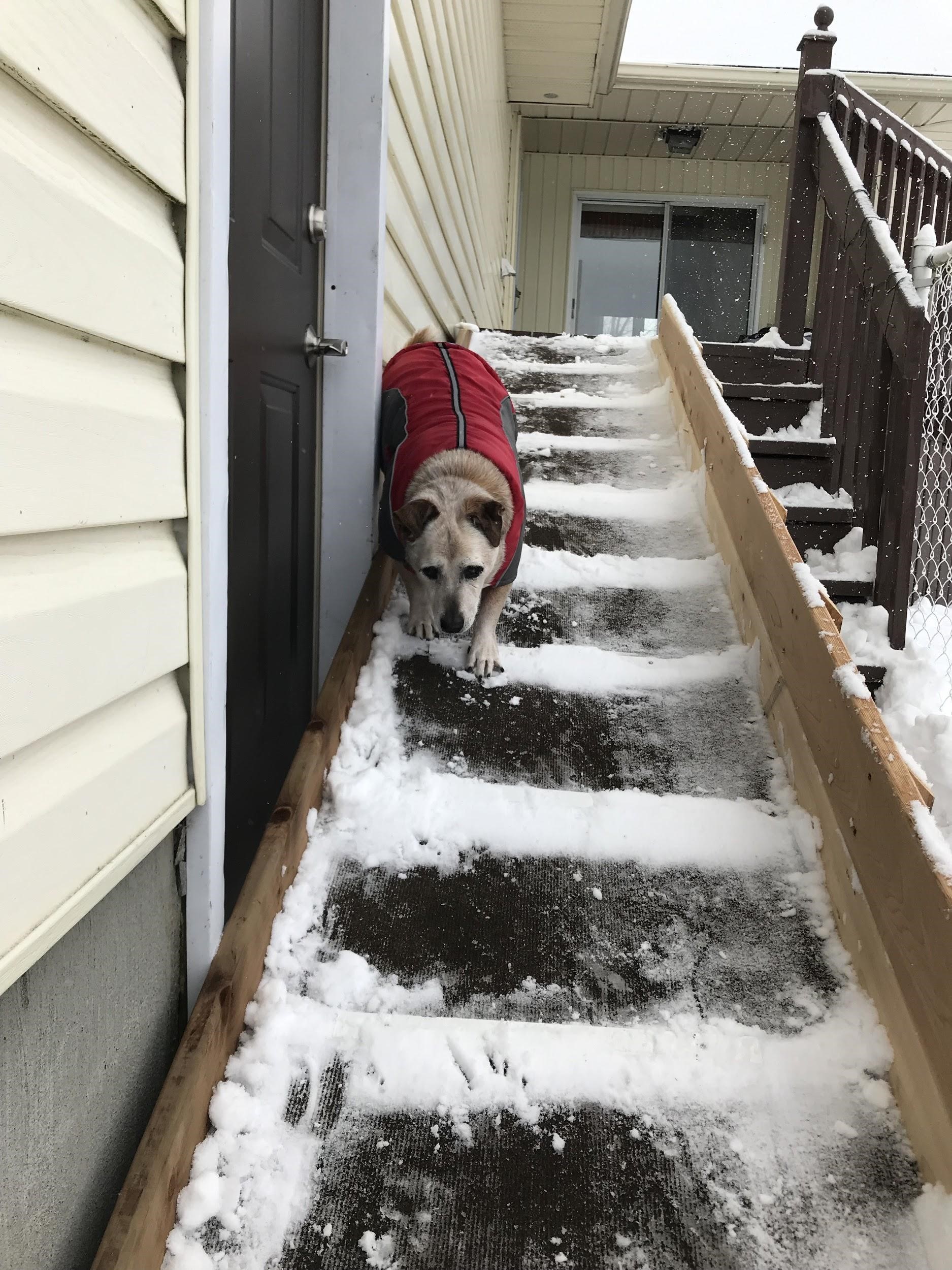
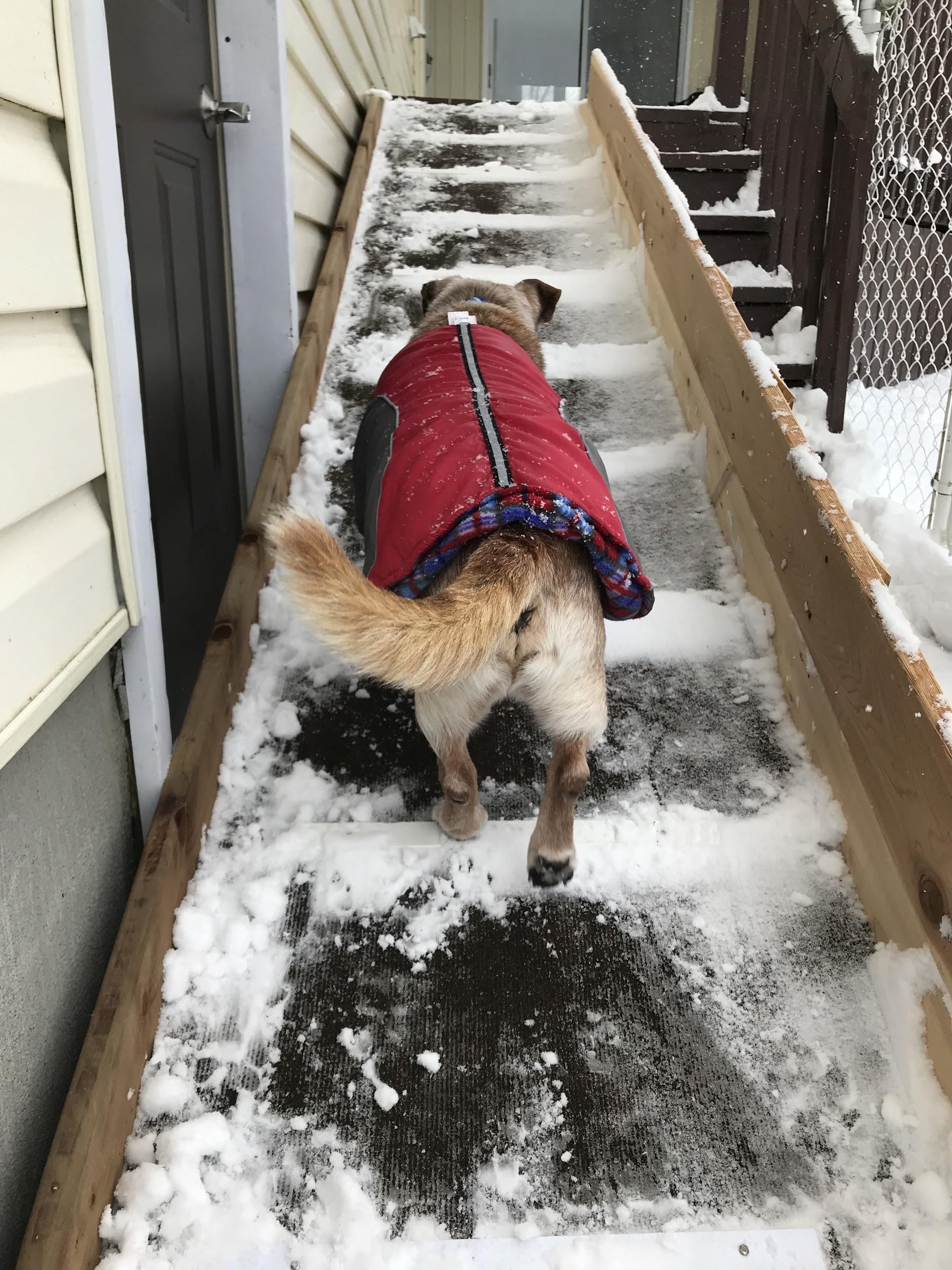
Noli using his homemade ramp! It saves our backs from carrying him up and down multiple times a day.
Winter Blue: Short Hair Coat
Pets with short hair cannot hold their heat as well as other dogs who have long hair and thick coats. This means that they will get colder, faster. Even some dogs with long hair may not be able to handle the colder temperatures.
Solution: T-shirts, sweaters, jackets! Have some fun with it! There are lots of different kinds of pet clothing out there so go on a little shopping spree and enjoy yourself. Some tack and horse feed stores offer blankets for dogs that are based on good quality horse blankets. So if you have a dog that gets cold but loves to be outside in the snow, one of those might be worth looking into. Some jackets have long sleeves so your dog’s legs don’t get cold. If it’s really cold outside, don’t be afraid to layer!
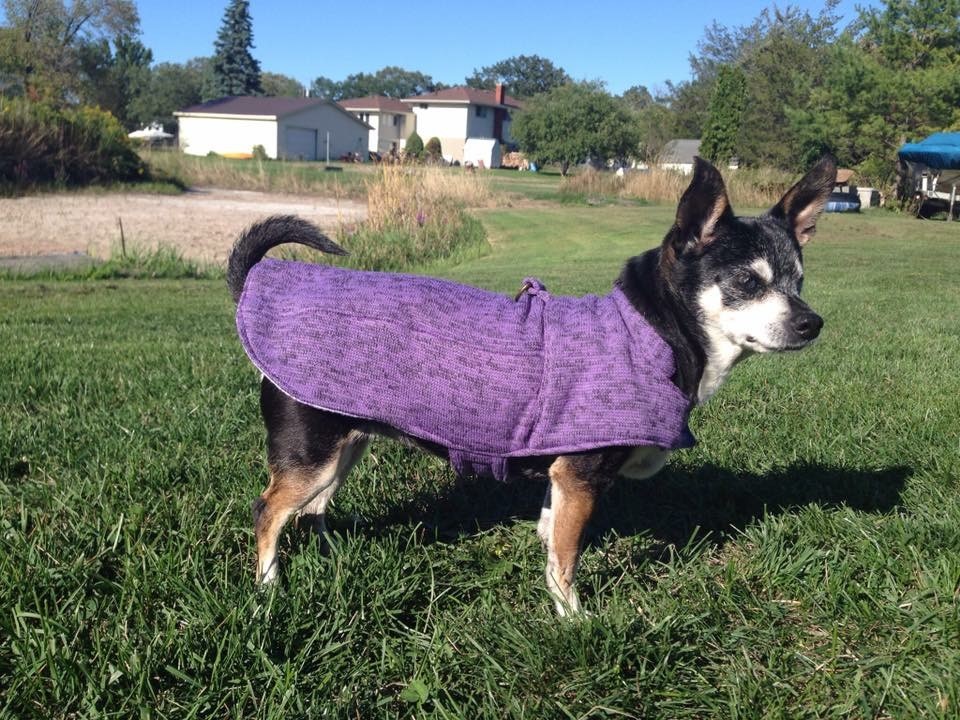
We made sure that Harriett had her coat made in advance of the snow!
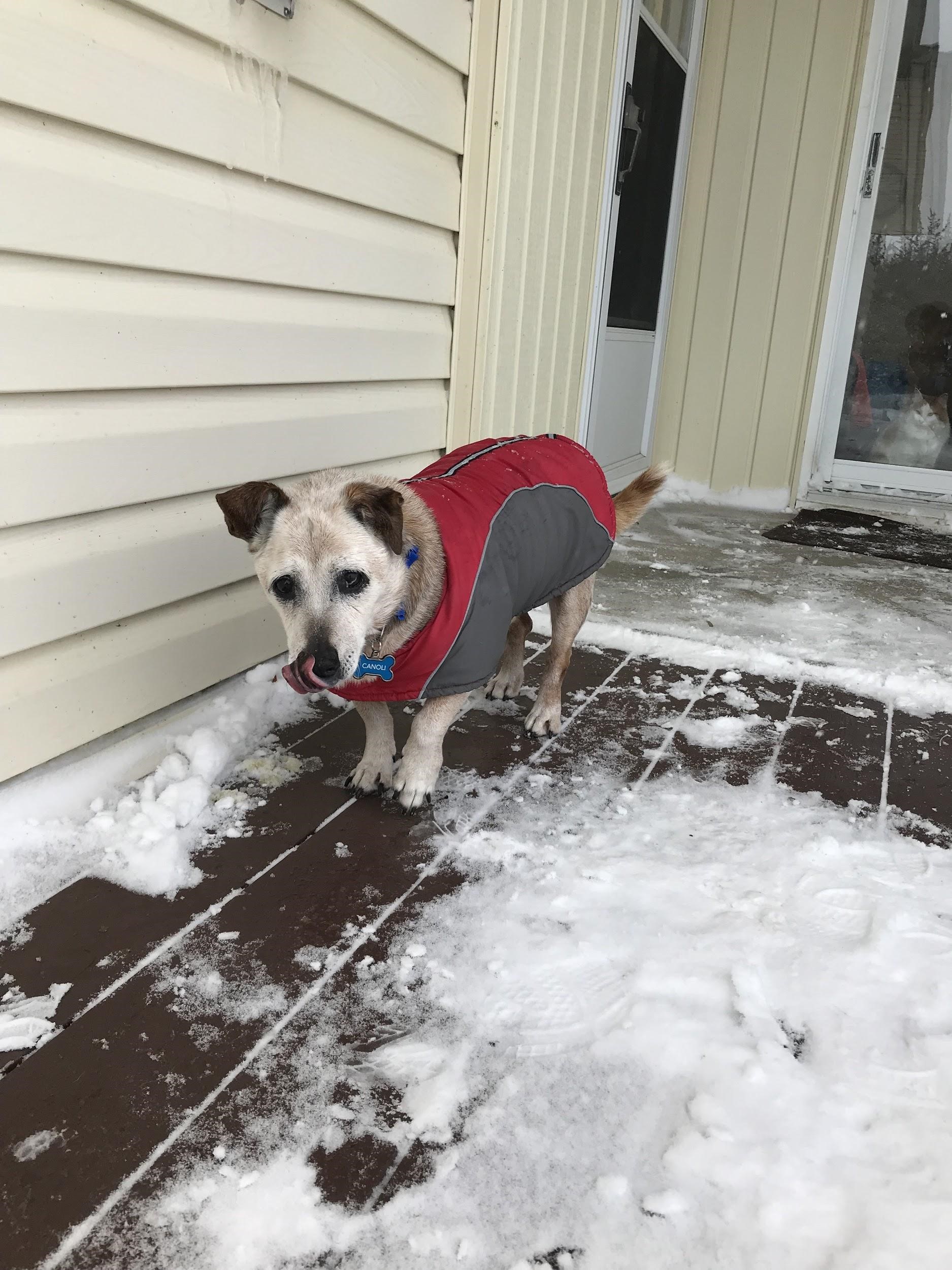
Noli was rescued from Miami so the cold is not his favourite! So he loves his coat!
Now don’t let this list bum you out, winter can still be fun! With these tips and tricks hopefully, you can find more ways to make winter enjoyable for you and your pet. If you have any questions about joint supplements, pain medications or anything else that you’ve read in this blog, feel free to give us a shout at the office and we would be happy to chat!
Written by: Kelsey Hewgill, RVT




